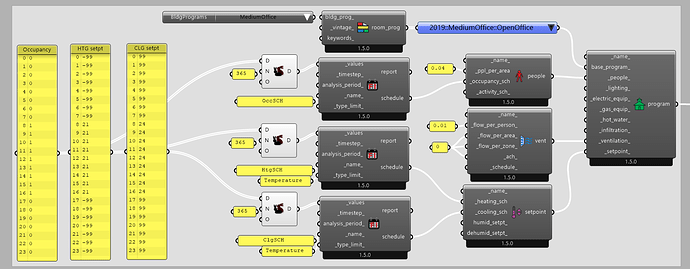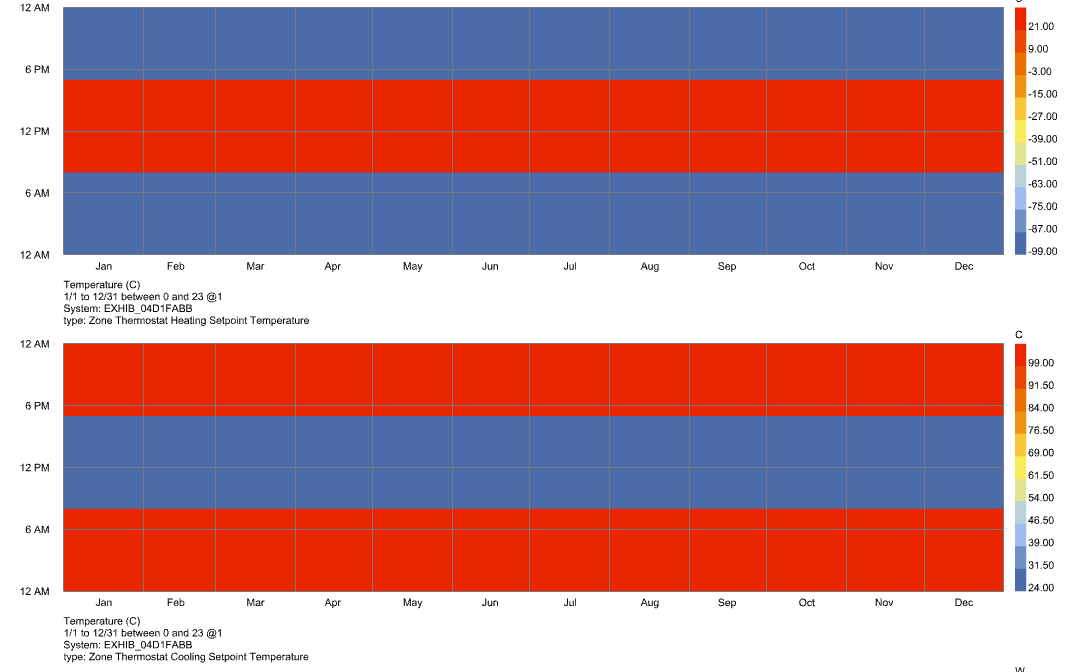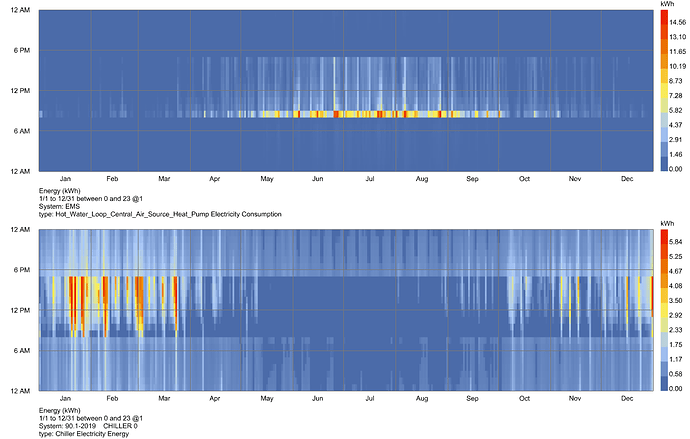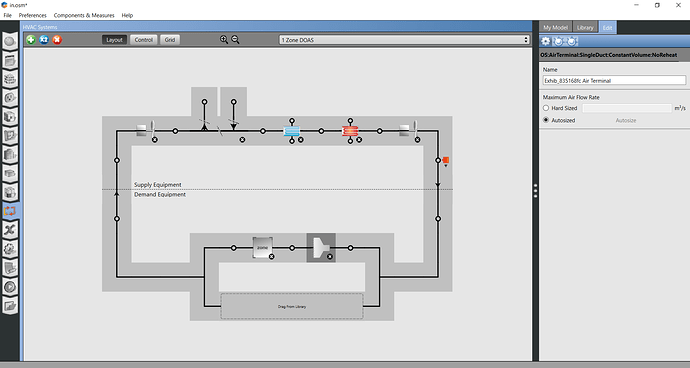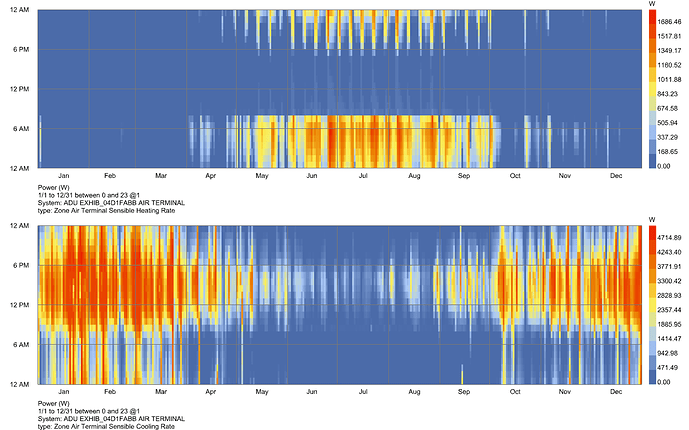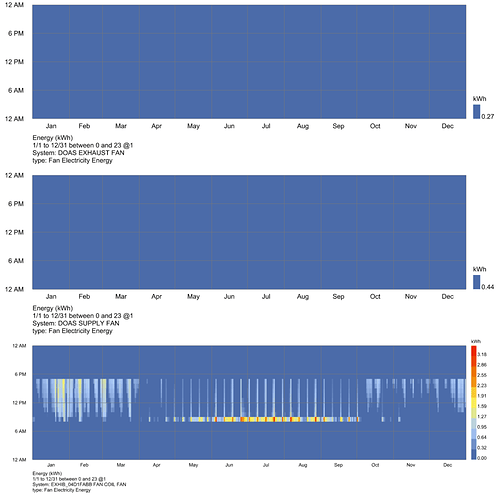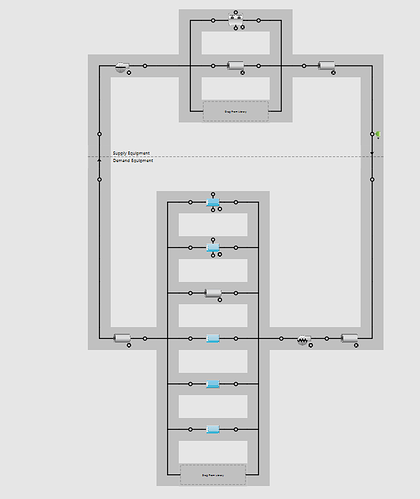I have a project where I want the HVAC system to not operate at certain times (e.g. at night).
The way I have tried to do this is by creating custom set point schedules. I’ve simplified my model to be a single room (without windows) and these are the schedules/loads I’m using for this example:
set points.gh (89.3 KB)
That is, for the times where I don’t want heating or cooling, I pick unrealistically high/low set points (99C and -99C). Is that common practice or is there a better way?
The system I am using is “DOAS with fan coil air-cooled chiller with central air source heat pump”. Since I only defined ventilation “per person” (per area/zone/ACH are 0), to prevent airflow during the night hours I simply set it to demand-controlled ventilation:
From the results, I see that the set points appear to come through correctly:
However, I still appear to have cooling/heating energy consumption during those night hours:
This is what the system looks like in OpenStudio:
The way I understand this system (the Mech engineers at our firm told me to pick it, I’m no Mech engineer myself) is that outdoor air is either cooled (the blue thing) or heated (the red thing) before it is pushed by those fans through a loop that is connected to each of the rooms (in this case just one room). Each room has a terminal with a fan where the air enters the room, but no heating/cooling occurs at this point (hence the “NoReheat” terminology).
And yet, I’ve noticed that EnergyPlus is giving me a zone-level air terminal heating and cooling rate:
What do these outputs mean, and why are there again values greater than 0 during those night hours?
Furthermore, as per the OpenStudio schematic I’m getting 3 fan outputs (supply and exhaust for the loop, plus the air terminal for the single zone):
While the zone ventilation rate drops to zero at night, I can see that there is still a constant airflow through the DOAS loop. Some questions on that:
- Is that supposed to happen?
- Is that what is causing the additional heating/cooling at night?
- Why doesn’t the DOAS airflow energy vary based on the demand of the room?
- Why is the DOAS exhaust fan energy lower than the supply?
- Do I have access to more HVAC parameters, or would I need to do that through Ironbug? The reason I ask is, I was checking out the OpenStudio model with one of the Mech engineers and he wanted me to change one of the values related to one of the equipment pieces (I think it was the inlet air temprature of the DOAS heating coil), but I had no idea how to do that in GH.
Apologies, I know this is quite an essay with a lot of questions but I’m appreciative for any pointers/insights at all!
